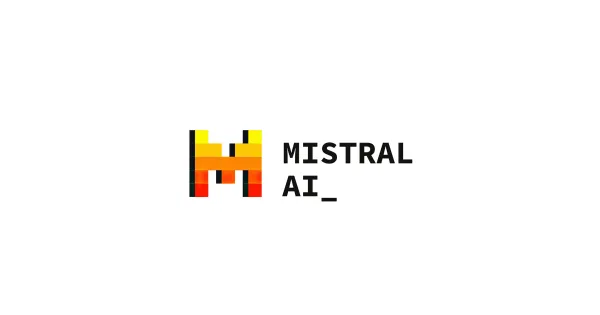The Future of Remote Work: Embracing the Digital Workforce

Remote work has become a defining aspect of the modern work landscape, driven by advancements in technology, changing work preferences, and global events.
As businesses worldwide continue to adapt to the digital era, the concept of remote work has gained significant momentum.
In this article, we will explore the future of remote work and discuss how businesses can successfully adapt to and thrive in a digital workforce.
Embracing the Flexibility and Freedom

One of the key advantages of remote work is the flexibility and freedom it offers to both employees and employers. For employees, remote work eliminates the need for a daily commute, allowing them to save time and money while enjoying a better work-life balance.
They have the flexibility to set their own schedules, work from anywhere with an internet connection, and tailor their work environment to suit their preferences. This flexibility can lead to increased productivity, job satisfaction, and overall well-being.
For employers, remote work opens up a wider talent pool as geographical constraints are no longer a limiting factor. It allows companies to hire the best talent from around the world, bringing diverse perspectives and expertise to the team. Remote work also enables businesses to reduce overhead costs associated with maintaining a physical office space, such as rent, utilities, and office supplies.
Additionally, remote work can improve employee retention and satisfaction, as it provides employees with the flexibility they desire and demonstrates trust from the employer.
Harnessing Technological Advancements

The future of remote work heavily relies on the advancements in technology. As technology continues to evolve, it is transforming the way we work and enabling more seamless and efficient remote collaboration.
Tools such as video conferencing, project management software, cloud storage, and communication platforms have become essential in facilitating remote work and bridging the gap between teams working from different locations.
- Google Workspace : A suite of productivity tools including Google Docs, Sheets, and Drive, which allows for real-time document collaboration and file storage.
- Microsoft 365 - A collaboration platform that combines chat, video meetings, file storage, and app integration for seamless remote team collaboration.
- Asana - A project management and task tracking tool that helps remote teams stay organized, prioritize tasks, and track progress.
- Slack - A popular team communication tool that enables real-time messaging, file sharing, and collaboration.
- Zoom - A video conferencing platform that facilitates virtual meetings, webinars, and remote team collaboration.
Advancements in technology are also driving the development of virtual reality (VR) and augmented reality (AR) solutions, which have the potential to revolutionize remote work.
These immersive technologies can create virtual workspaces where remote team members can collaborate, interact, and feel a sense of presence despite being physically distant. With VR and AR, employees can participate in virtual meetings, share and manipulate 3D models, and engage in immersive training and learning experiences, bringing a new level of interactivity and engagement to remote work.
Nurturing Work-Life Balance

Remote work has the potential to improve work-life balance by allowing individuals to create flexible schedules and avoid lengthy commutes. With remote work, employees have the freedom to structure their workday according to their personal needs and preferences.
This flexibility enables them to better manage their time, allocate their energy more effectively, and achieve a healthier work-life integration. They can attend to personal responsibilities, such as taking care of family members or pursuing hobbies and interests, without sacrificing their professional commitments.
Furthermore, remote work eliminates the need for daily commuting to a physical office, which can be a significant source of stress and time-consuming. Without the daily commute, employees can reclaim those hours and redirect them towards activities that bring them joy or enhance their well-being. This can result in reduced stress levels, increased productivity, and improved overall job satisfaction.
Remote work empowers individuals to create a more harmonious balance between their personal and professional lives, ultimately contributing to their overall happiness and well-being.
Addressing Security and Data Privacy

As remote work involves accessing and sharing sensitive company information, businesses must prioritize security and data privacy. With employees working from various locations and using different devices, there is an increased risk of unauthorized access, data breaches, and cyber-attacks. Therefore, it is crucial for organizations to implement robust cybersecurity measures to protect their data and ensure the confidentiality, integrity, and availability of their systems.
To enhance security in remote work environments, businesses can implement multi-factor authentication, strong encryption protocols, and secure VPN connections.
They should also establish clear security policies and provide training to employees on best practices for data protection and safe online behavior. Regular security audits and vulnerability assessments can help identify potential weaknesses and address them proactively.
By adopting a comprehensive security framework, businesses can minimize the risks associated with remote work and maintain a secure working environment.
Adapting Leadership and Management Approaches

With remote work, traditional leadership and management approaches need to adapt to ensure effective team management. The physical distance between team members can create challenges in communication, collaboration, and supervision. Therefore, leaders must leverage technology and adopt new strategies to foster team cohesion, maintain productivity, and provide support to remote employees.
Effective communication becomes even more crucial in a remote work setup. Leaders should establish clear communication channels and promote regular, transparent, and inclusive communication among team members. This can be achieved through the use of video conferences, instant messaging platforms, and project management tools. Regular team meetings, both one-on-one and group sessions, help maintain alignment, clarify expectations, and address any concerns or challenges that remote employees may face.
Remote work also requires a shift towards outcome-based performance management rather than focusing solely on hours worked or physical presence. Leaders should set clear goals, define performance expectations, and establish measurable metrics to track progress. Regular check-ins and feedback sessions provide opportunities for performance discussions, coaching, and recognition.
By focusing on outcomes and results, leaders can empower remote employees to take ownership of their work and foster a sense of autonomy and accountability.
Final Thoughts
The future of work is undoubtedly digital, with remote work becoming an integral part of the work landscape. Businesses that embrace and adapt to this digital workforce can harness its benefits and unlock new opportunities.
By embracing flexibility, leveraging technology, fostering collaboration, nurturing work-life balance, prioritizing security, and adapting leadership approaches, businesses can thrive in the future of remote work and achieve sustainable growth.
Remember, the key to success lies in embracing change, leveraging technology, and nurturing a culture that supports remote work in all its aspects.
The future of work is here, and it is digital!





